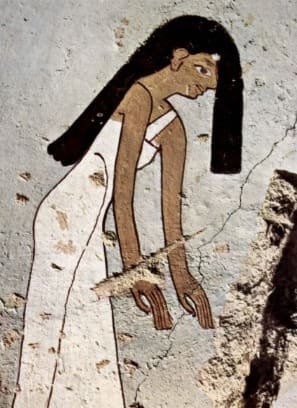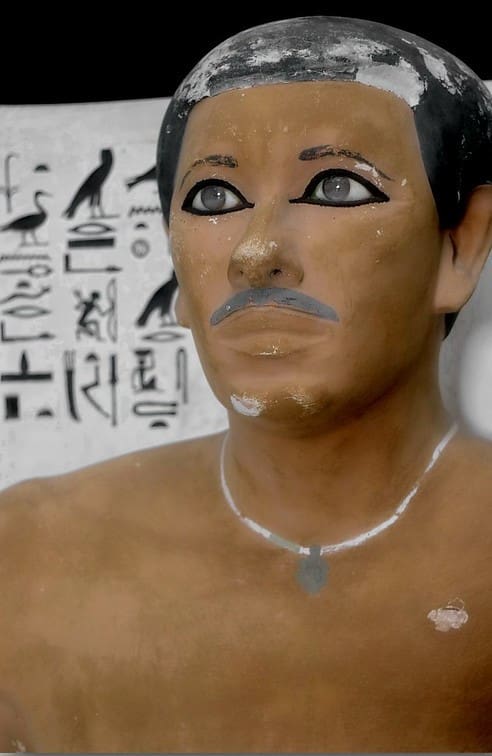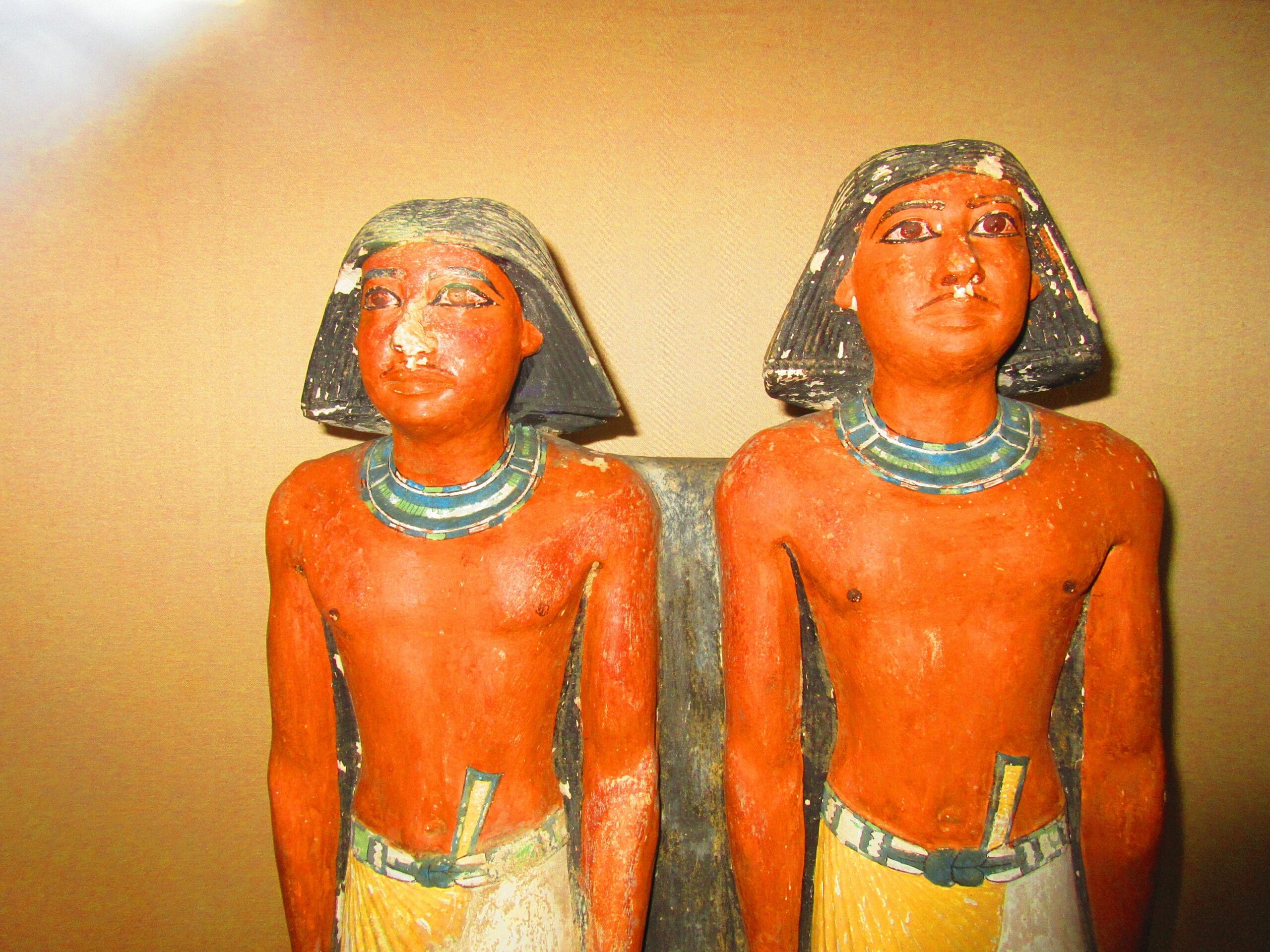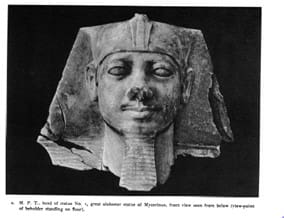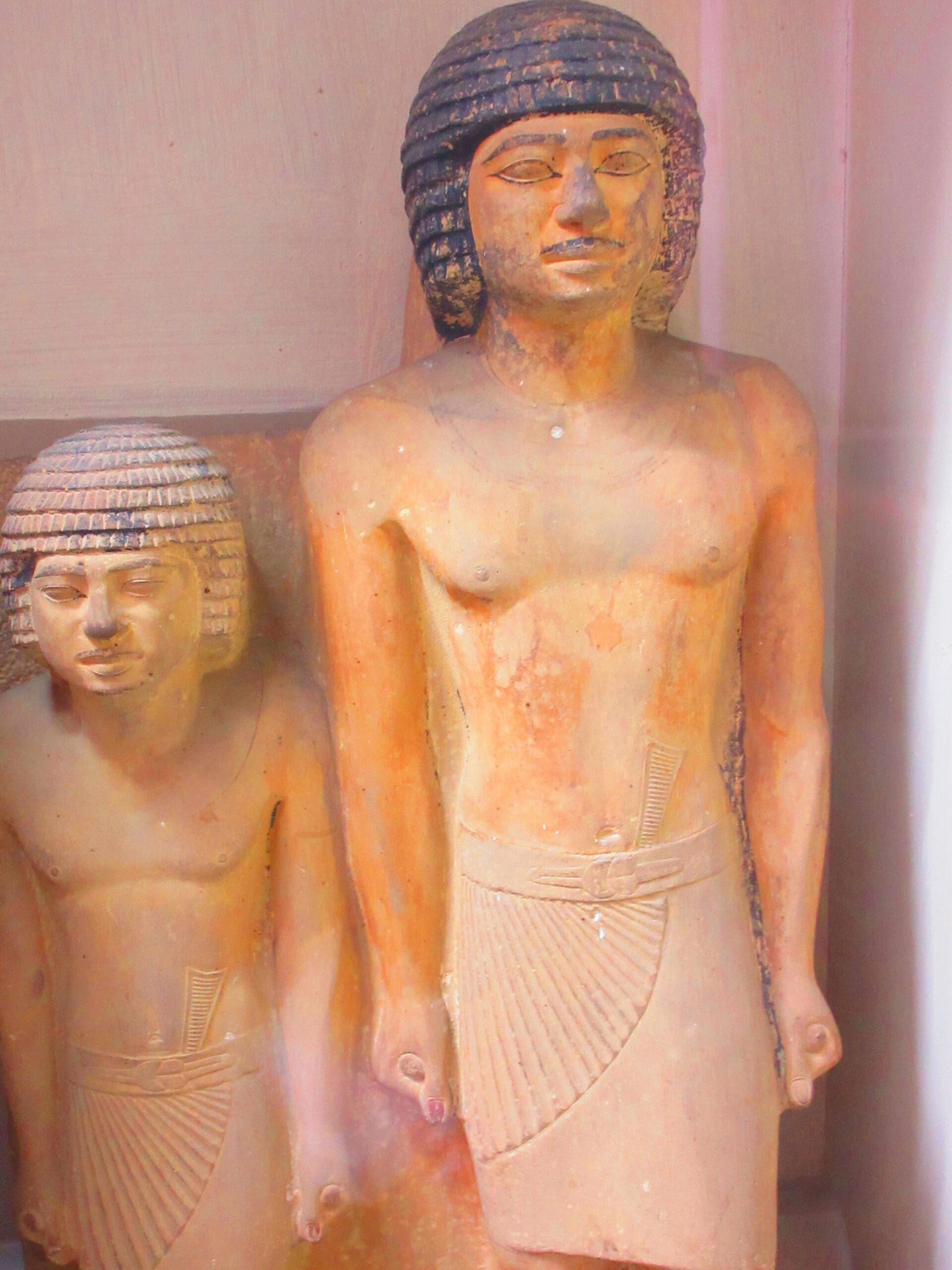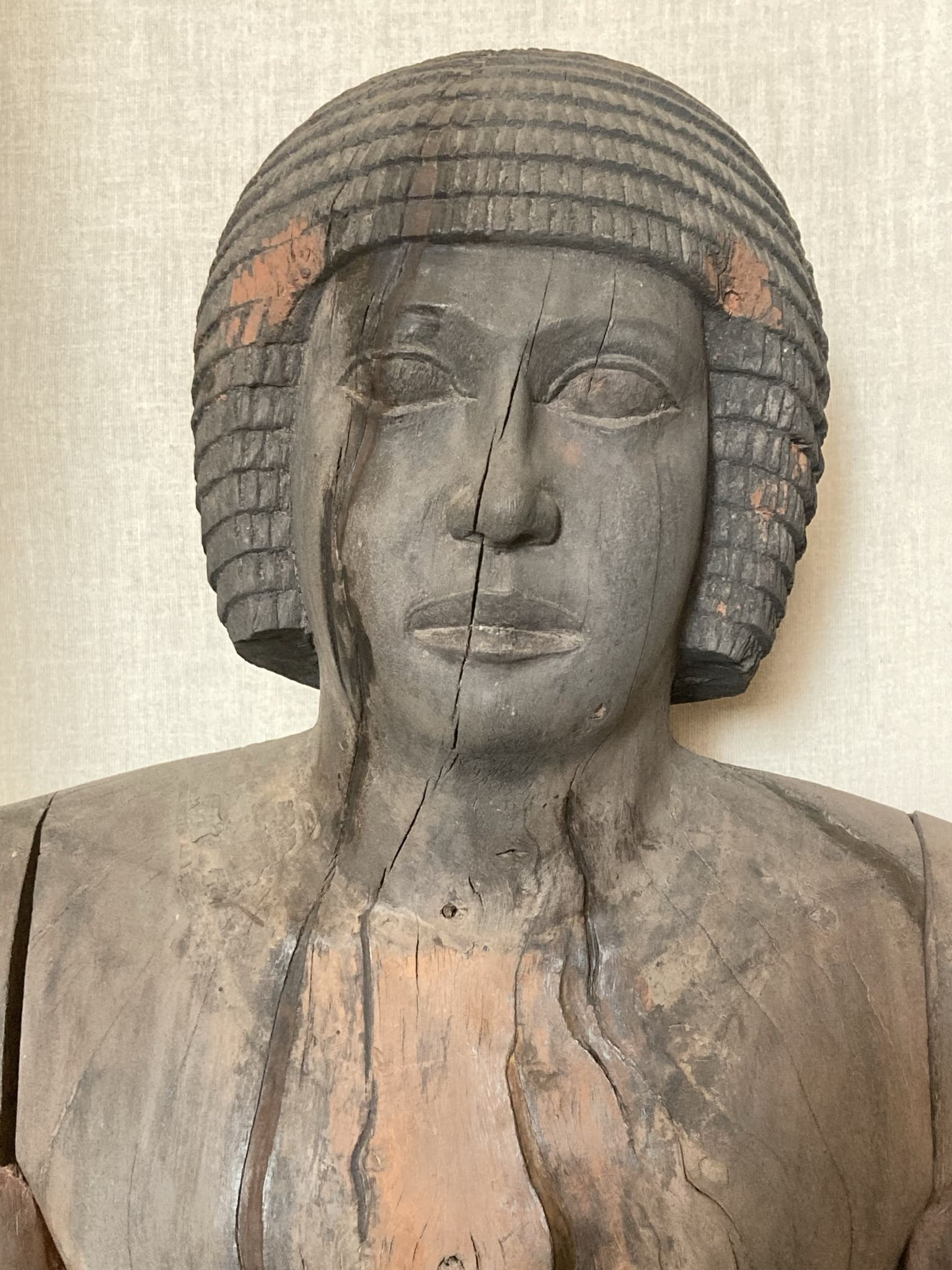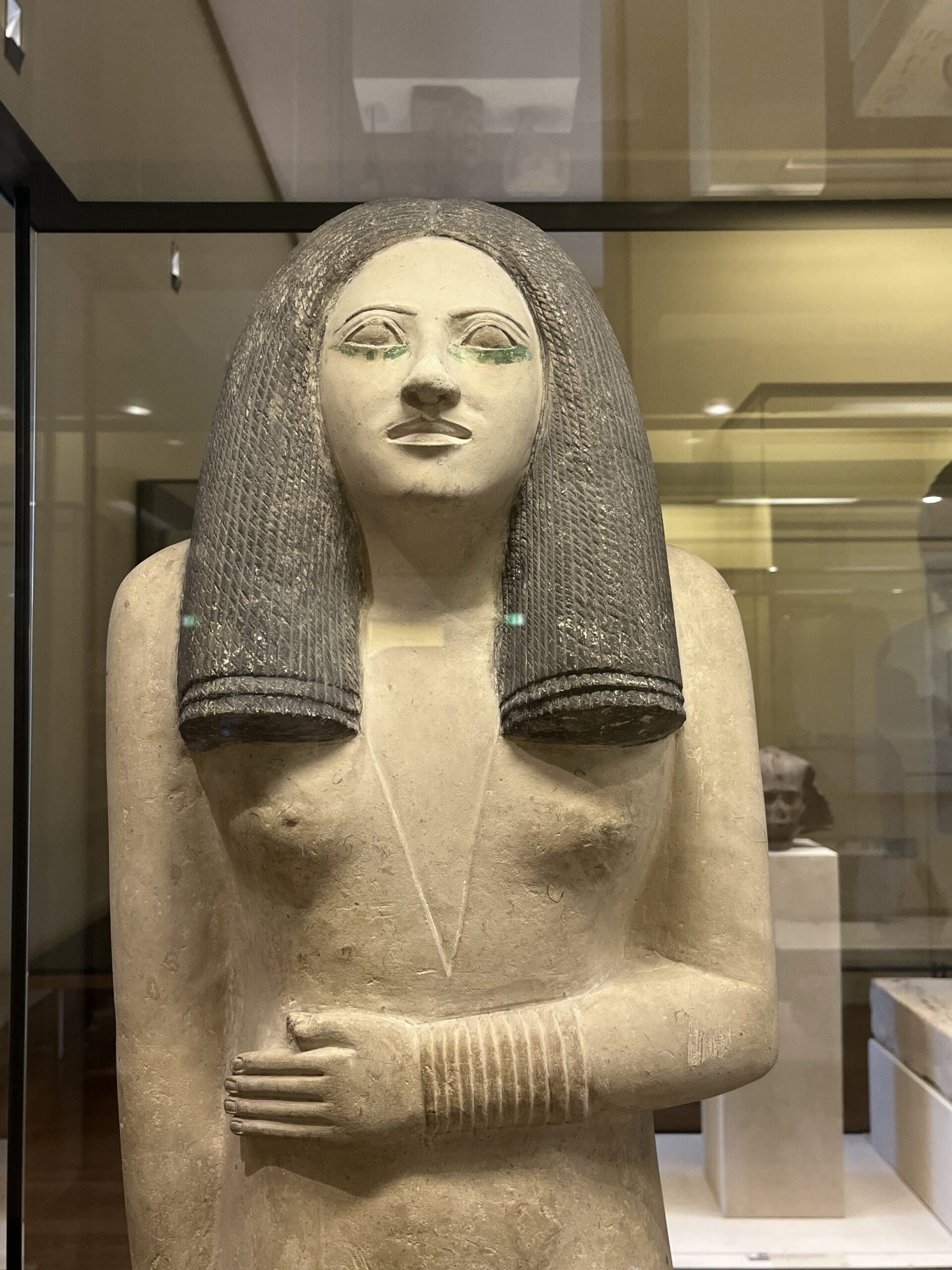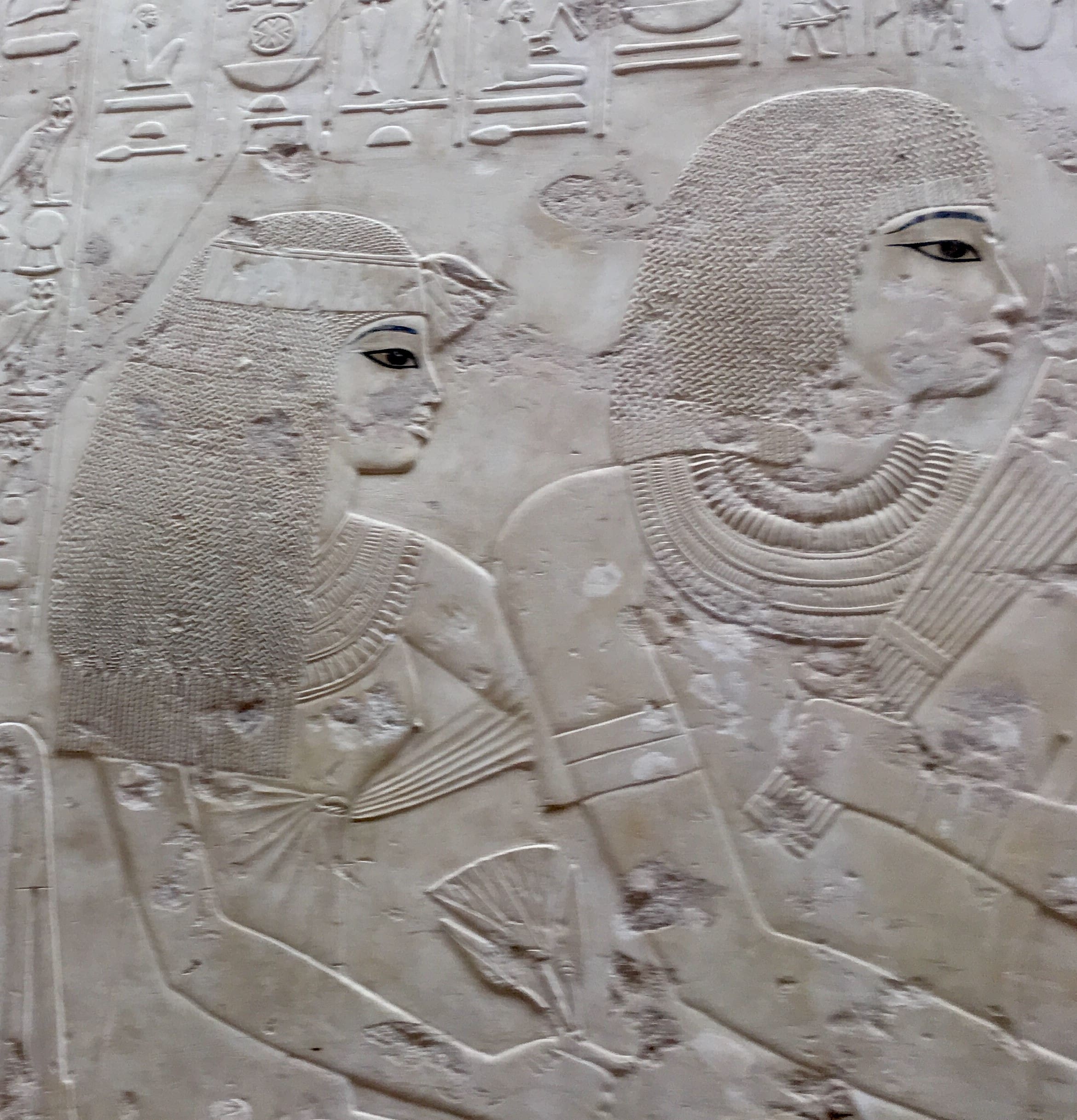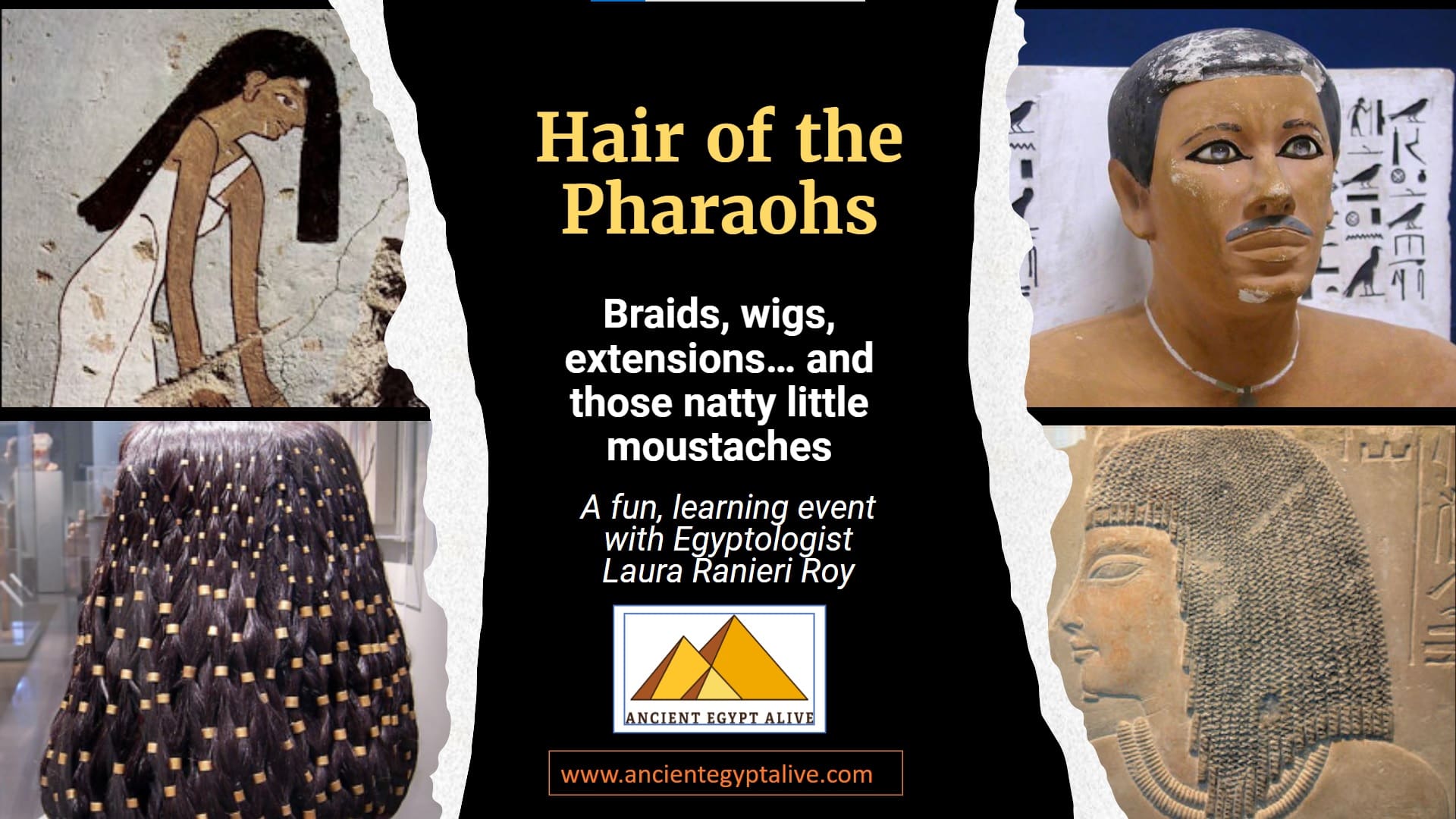Hair and moustaches in Ancient Egypt
By Laura Ranieri Roy
Did ancient Egyptians have fancy hair stylists and barbers – even at the dawn of their civilization? Was it considered cool to follow the latest trends set by the kings and the elite? What about having groomed moustaches and the latest wigs… were they de rigueur in ancient Egypt? A resounding yes to all!
My first fascination was not with hair… but with the little moustaches that seem to appear only on the art and statuary of the old Kingdom. I found it interesting that the “stache” pretty much disappears by the Middle Kingdom. Why – and what did they symbolize? We will look at that… keep reading…
This led me down a rabbit hole of research as I looked into facial hair but also hairstyles and wigs, and their importance in ancient Egypt not only for this life but for the next. As with all things for the ancient Egyptians great importance was placed on preparing for the afterlife.
So let me share a few facts about Ancient Egypt hair fashion you might also find fascinating.
Interestingly, at the end of the Old Kingdom (around 2100 BCE) an institutionalized canon for hairstyles was in place alongside the emergence of a strong central administration. Different hairstyles (and facial fashion) became a way of identifying classes of individuals. Also, what was good for king was good for his court: the fashion of the Pharaoh tended to be adopted by his officials and even trickled down the populace.
That said, there was definitely “hierarchy” in styles. The elite could be distinguished from the unwashed masses by their distinct dos and elaborate wigs.
Now, I must credit some great scholars for their fine research into all matters “hair” from which I derived some of my thoughts on this topic, distilled in this blog. They are the late Dr. Geoffrey Tassie, Dr. Maria Rosa Valdesogo (who has a great “hair and death” blog site and of course, the lady with the remarkable red hair, Dr. Joanne Fletcher.
Here are five fascinating facts about hair and moustaches in Ancient Egypt
- Hairdressers and barbers were popular professions!
As early as the 3rd dynasty (27th c. BCE) we have found evidence of copper razors in the tomb of mustachioed official Hesy-re! Certainly, itinerant barbers and royal hairdressers were around in ancient Egypt from the beginning of this great civilization. Interestingly, there are five known private barbers we have names for from the Old Kingdom — and one branch of palace barbers engaged in shaving and washing the king, who no doubt shaped and groomed his majesty’s moustache.
One very high ranking palace barber during the reign of Niussere in Dynasty 6, in fact, held a long list of barbering titles that have survived to us, including ‘Overseer of the Palace Barbers’ I love the beautiful carved relief on the 11th Dynasty sarcophagus of Queen Kawit, a Queen of Mentuhotep II, founder of the Middle Kingdom. The queens always had a private hairdresser. It’s wonderful how she is depicted tending to the locks of the Queen with her fingers distended.

Hesy-re – scribe, dentist, official of Djoser, 3rd Dynasty from reliefs and wooden panels in his Sakkara tomb (© Cairo Museum)
And in this small fragment, we see hairdresser “Henut” giving a fancy style to another of Mentuhotep II’s queen’s – Neferu. A fancy half up-do, no doubt, for a ritual to Hathor, goddess of love and beauty.
- Wigs were all the rage – and they were luxurious ones!
Wigs were big in ancient Egypt both as a matter of vanity and pride – as well as hygiene. Both the living and the dead, men and women were decked out in the most magnificent hair pieces. Wigs were made of mainly human hair, but a limited amount of plant fibre was also used in the construction. The extra fibre gave the wigs that extra “pouff!.” Bees wax and resin too were used to set the styles and create that sheen and lustre we still appreciate today.
Why the wig craze? Well one underlying reason is the heat of Egypt – and a desire to remain clean and free of… lice.
There are amazing examples of wigs in museum collections today. Here is a magnificent one from the British Museum from the New Kingdom Thebes, found in 1835 in its original wig box made of reeds. It has 300 strands of hair each containing 400 hairs – all coated with resin and beeswax! What a do!
As Dr. Joann Fletcher nicely sums up:
“Wigs and hair extensions worn as items of both daily and funerary attire combined the desire for ornate and impressive styles with the practicalities of cleanliness.”
- Hair rituals important in funerary rites
Hair played an important role in funerary rituals as well. Reliefs and paintings show us how mourners pulled and shook their hairs in the funeral. Professional “mourning” women would walk together weeping and making the typical gestures of mourning: beating themselves, raising arms, ripping their clothes…but also shaking their hair and covering their face with it –or pulling a front lock of hair.
- Small moustaches were unique to the Old Kingdom
What do you think of when you think of little moustaches? Teddy Roosevelt? Dr. Phil? Tom Selleck? Hitler? Men in the 1970s?
Interestingly, small moustaches only appeared in Ancient Egypt during the glory days of the Old Kingdom. They appear to be a fashion of the king adopted by prominent men of his court… and even trickling down to the artisans and builders who built the pyramids.
Certainly, King Djoser of Step Pyramid fame sported a fine one. As did King Khafre (in some works) and Menkaure, great kings of the Giza pyramid age.
One of the most famous moustachioed statues is the limestone seated masterpiece of Prince Rahotep, a brother of King Khufu, Great Pyramid Builder.
Little details like moustaches in statuary for the afterlife allowed a king, official or commoner to express individuality of the face while bodies were usually idealized. After all, the ka and ba would rely on these images of the deceased to recognize its unique likeness should something happen to the mummy.
Most importantly, the moustache seems to have become a marker of confident and masculine times. This is true through history! Think moustache, think machismo, power, potency. With the collapse of the Old Kingdom after the 6th Dynasty and descent into chaos, uncertainty and civil war, moustaches seem to disappear… never to make a comeback.
- Hair styles changed through the different ages of Egypt.
Ancient Egyptian hairstyles are great markers for dating as the styles changed with the times. In the old Kingdom, we can remark three typical styles for men:
- the short round curly style,
- the short round tiled style
- the longer shoulder-length form
When it comes to women, longer styles were always in fashion, perhaps due to the association of long hair with fertility.
New Kingdom and beyond: more elaborate hairstyles and wigs prevail – especially for men. While priests shaved their heads and remained bald (for cleanliness), the fashion was for intricate braids and very fancy elegant styles. Like the official Ramose, who served Amenhotep III into Akhenaten’s reign in the 18th dynasty. The amazing relief carving captures hairstyles which are exquisite:
So, for the Ancient Egyptians, it was never “hair today, gone tomorrow”. Hair, like the soul, was designed to endure for millions of years. We are fortunate we have so many great works of art in stone, paint and carved relief that give a window into ancient fashion. Not to mention so many shockingly well-preserved wigs and hair extensions designed to ensure the deceased looked as good in the next life as they did in this one – maybe even better!
Next time you go to the salon or barber, perhaps you can draw some inspiration from the Ancient Egyptians. Give kudos to your hairdresser: keeping hair beautiful hair and on-trend has an astoundingly long history!
Hankering to learn more about hair in Ancient Egypt?
Don’t miss Hair of the Pharaohs, my online lecture Tuesday July 25 at 7pm. Register Here!
Or Click on the link below
https://www.eventbrite.ca/e/hair-of-the-pharaohs-tickets-663868427337



